We think we get over things.
We don’t get over things.
Or say, we get over the measles
but not a broken heart.
We need to make that distinction.
The things that become part of our experience
never become less a part of our experience.
How can I say it?
The way to “get over” a life is to die.
Short of that, you move with it,
let the pain be pain,
not in the hope that it will vanish
but in the faith that it will fit in,
find its place in the shape of things
and be then not any less pain but true to form.
Because anything natural has an inherent shape
and will flow towards it.
And a life is as natural as a leaf.
That’s what we’re looking for:
not the end of a thing but the shape of it.
Wisdom is seeing the shape of your life
without obliterating (getting over) a single
instant of it.
by Albert Huffstickler
Some radical acceptance, this Sunday morning. How is it to give up the wish that things are other than they are (or that we ‘get over things’), and instead trust that with time, everything will ‘find its place in the shape of things’?
I know the wisdom of this, I’ve seen the damage that the second arrow of avoidance and resistance cause both in myself and others, and I can talk about it convincingly when we discuss the three arrows of suffering in the first module of Mindfulness Level 2 – Responding with Compassion — but that doesn’t mean it’s any less of a practice for me in those moments when it’s relevant.
And it’s easy to give myself a hard time about that (some third arrow of something-is-wrong-with-me, on top of it all). Shouldn’t I know better by now? shouldn’t I be able to just accept the breaking heart, the unavoidable pain of the first arrows that, as the Buddha’s famous sutra says, “even the wise and the good cannot avoid”? Maybe – but reality is that at this point, acceptance is less of a thing I have, and more of a verb, something I have to practice and train.
There’s a great little practice that I learned from my dear friend and colleague-in-mindfulness Ratnadevi, which she called “zen coaching”, which you could compare to the first two stages of the RAIN practice. When you do it in your practice, you ask yourself: “what is alive in me?” and then you name what is at the forefront of your experience. Having given some space to what’s there, the second question follows: “can I allow it?” and then you sense into the answer, which can range from a wholehearted “yes” to “no way!” If the answer is “yes”, you can sit with that sense of allowing for a while and then go back to the first question and notice what’s alive in you in this moment, and see if you can allow that.
If the answer is “no, I cannot just allow it, it hurts too much! / it’s not fair! / I just bloody well don’t want to!” then a third question comes in: “and can I allow that…?” You can ask the third question as many times as you need, with infinite patience, kindness and tenderness (I find imagining the voice of a favourite teacher asking it, helps with that).
And sooner or later (or sometimes much later), the answer is “yes, I can allow maybe not the thing itself, but I can allow this wholebody resistance to whatever is going on”. And as if by magic, the first softening happens and things begin to move again, and I can begin to feel how this too might ‘fit in’, and how ‘anything natural has an inherent shape and will flow towards it.’
And if even remembering to practice feels like too difficult in the moment, I can always turn to a poem just like this one…

Photo by Vidar Nordli-Mathisen on Unsplash




Thank you ??
You’re very welcome Gwen! 🙂